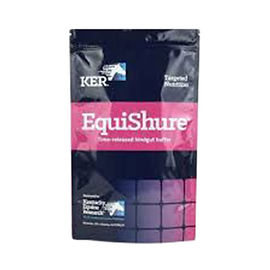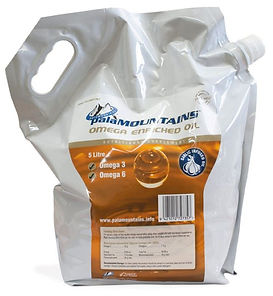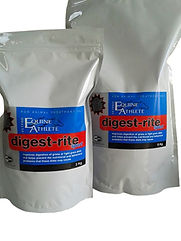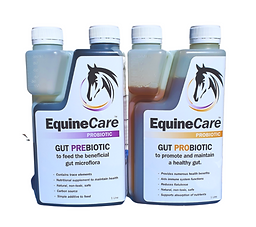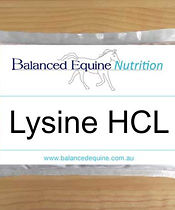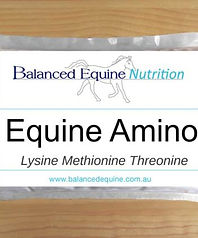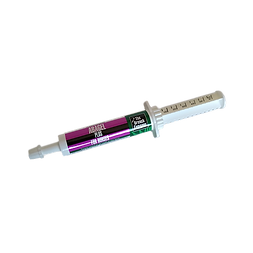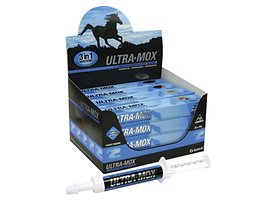



FEEDING FOR WEIGHT GAIN
When your horse is thin there is more to think about than just increasing the feed. First of all it is so important to try and analyse why condition of the horse is too light and therefore if any one or more of the following aspects are an influence then fix those first before increasing its feed intake to put on weight as this may result in an over- energised or fizzy horse who is still underweight.
HELP RESOURCES
Horses Gut Health – The What, Why, How of Equine Digestion using Probiotics and Prebiotics Supplements
Why Do Horses need help with Gut Health?
Changes in grazing can cause dietary upsets
If food is not processed properly, issues such as gut pain and discomfort may occur and these in turn create negative behaviour of the horse, hindgut acidosis with its pain and risk of grass laminitis, poor condition and performance, overly sensitive reactions to demands of work and often early onset of fatigue.
The horses’ digestive system will be influenced by conditions of environment- the pasture, the feed , the climate. It can be negatively affected by stress, particularly from travel and competitions or racing etc., also hard work.
If food is not processed properly, issues such as gut pain and discomfort may occur and these in turn create negative behaviour of the horse, hindgut acidosis with its pain and risk of grass laminitis, poor condition and performance, overly sensitive reactions to demands of work and often early onset of fatigue.
The horses’ digestive system will be influenced by conditions of environment- the pasture, the feed , the climate. It can be negatively affected by stress, particularly from travel and competitions or racing etc., also hard work. Sudden changes of diet and or work levels and routines plus sickness will also reduce the efficiency of the microbiome. With breeding stock – the onset of lactation and later weaning may cause disruption to the gut microflora. Any disruption can result in colic and or diarrhoea. In particular, the intake of antibiotics will break down the gut flora – as the name suggests they destroy bacteria – both bad and good. Any horse recovering from infections that have required administering anti-biotics will need supplementing with a prebiotic and probiotic to establish the gut flora.
What is a Probiotic and a Prebiotic ?
The difference between a Probiotic and a Prebiotic
-
A Probiotic provides live beneficial bacteria direct into the animal’s gut
-
A Prebiotic helps activate and feed the existing bacteria (microflora) in the gut.
Both prebiotics and probiotics can work together to improve the diversity and availability and efficiency of gut bacteria, (often called the gut microbiome).
Previously, adding live microflora as a supplement has been difficult due to the short expiry (use by) dates on available products. In the past, manure therapy was the easiest way; this entailed taking the clean manure of a healthy gelding, mix with water to make a slurry and syringe down the throat of the unhealthy horse. This is also why foals will eat manure at 10 days of age to naturally establish their gut flora.
However, nowadays we have access to new Probiotics that can have a better shelf life and are readily available to be added to the diet, for example Yeasts such as Saccharomyces cerevisiae.
The most effective Prebiotics for horses are
-
Fructo-oligosaccharides (FCOS)
-
Mannooligosaccharides (MOS)
Scientific tests have shown the benefits of these in particular, that by improving the volume and activity levels of the bacteria in the gut, it has a direct health benefit to the horse.
How Can The Horses Gut Health be Improved with Supplements?
There are scientific studies to show that this is the case, see below. However, it is important to select the supplements with the active ingredients that are specifically supportive of equine digestive tracts.
Scientific tests have shown Fructo-oligosaccharides (FCOS) and Mannooligosaccharides (MOS), benefit horses health by reducing the bad bacteria E Coli, reducing the acid effects in the hindgut thus reducing discomfort and the possibility of laminitis.
They also show that Probiotic yeasts improve the numbers of good bacteria which in turn assist digestive processing of food, making the transfer of food to energy much more efficient. Thereby improving weight gain and reducing fatigue.
Summary of the use of Probiotics and Prebiotics
Eating weeds or non pasture vegetation can cause dietary upsets.
The greatest opportunity to improve the status of the gut health of the horse is to feed a combination of both these active supplements, thereby helping to negate the difficulties a horse faces at times when environment or work levels change, and in particular when sickness and or infections take hold.
Any of these changes can reduce the efficiency of their gut. A course of a combined Prebiotic and Probiotic formula is ideal to help them get through these times and stay healthy and reduce negative events in their gut.
Equine care Gut and Prebiotic, – contains both FCOS and MOS Prebiotics combined with the Probiotic yeast Saccharomyces cerevisiae
The Science :-
Effects of dietary short-chain Fructo-oligosaccharides on the intestinal microflora of horses subjected to a sudden change in diet F. Respondek, A. G. Goachet and V. Julliand Jnl Animal Science 316-323
Dietary supplementation with short-chain Fructo-oligosaccharides improves insulin sensitivity in obese horses F. Respondek, K. Myers, T. L. Smith, A. Wagner and R. J. Geor. Jnl Animal Science 77-83
Fructo-oligosaccharide supplementation in the yearling horse: Effects on fecal pH, microbial content, and volatile fatty acid concentrations. Obesity and diet affect glucose dynamics and insulin sensitivity in Thoroughbred geldings By: Hoffman, RM (Hoffman, RM); Boston, RC (Boston, RC); Stefanovski, D (Stefanovski, D); Kronfeld, DS (Kronfeld, DS); Harris, PA (Harris, PA)JOURNAL OF ANIMAL SCIENCE Volume: 81 Issue: 9 SEP 2003
Can the microbiome of the horse be altered to improve digestion? Coverdale JA. J Anim Sci. 2016 Jun;94(6):2275-81. doi: 10.2527/jas. 2015-0056 : Abstract : When high-concentrate diets were fed, probiotic supplementation helped maintain cecal pH, decreased lactic acid concentrations, and enhanced populations of cellulolytic bacteria. Similarly, use of prebiotic preparations containing fructooligosaccharide (FOS) or mannanoligosaccharides have improved DM, CP, and NDF digestibility when added to high-fiber diets. Furthermore, use of FOS in horses reduced disruptions in colonic microbial populations after an abrupt change in diet and altered fecal VFA concentrations toward propionate and butyrate. Potential use of prebiotics and probiotics to create greater stability in the equine microbiome impacts not only the digestibility of feed but also the health of the horse.
Effect of live yeast culture supplementation on apparent digestibility and rate of passage in horses fed a high-fiber or high-starch diet1 doi:10.2527/jas.2006-796 J.-P. Jouany*, J. Gobert†, B. Medina†‡, G. Bertin† and V. Julliand‡2
Effect of Live Yeast Culture Supplementation on Hindgut Microbial Communities and their Polysaccharidase and Glycoside Hydrolase Activities in Horses Fed a High-Fibre or High-Starch Diet JP Jouany et al. J Anim Sci 87 (9), 2844-2852. 2009 May 22
The Challenges for Overweight
Obese – Laminitic – EMS – Cushing Diseased Horses
Complications of Equine Obesity
Aside from the obvious physical issues of too much condition affecting movement, respiratory stress, joints etc, the biggest issue on the horses physiology is the onset of metabolic problems from excess blood glucose and insulin: such as insulin resistance, laminitis, endocrine complications such as Cushing’s disease or Equine Metabolic Syndrome (EMS). The link between all of these is obesity, which is why it is vital to recognise the onset of too much condition and deal with it quickly. Adipose (fat) tissue is an active endocrine organ and when they are in excess they secrete body chemicals that impair insulin signalling within fat and muscle so that insulin resistance develops. Insulin is an anabolic hormone produced in the pancreas and is important in the regulation of fat metabolism. When a horse ingests glucose (from grass and carbohydrate feed), insulin is released to control the amount of glucose in order to maintain normal levels in the blood. With an overload of fat cells in the body, the natural control of glucose is reduced and hence insulin resistance begins. In horses, the particular condition is called compensated insulin resistance, a direct result of ingested carbohydrates and is not the same as the human condition of poor glucose control which occurs when the pancreas does not produce enough insulin and it becomes type 2 diabetes. Horses do not suffer from that. EMS is also a direct result from compensated insulin resistance.
Laminitis is a constant concern for overweight horses, more especially ponies, and can be an added complication with EMS or as a stand-alone result of high carbohydrate intake and overweight condition. Conversely a history of laminitis can predispose an animal to develop EMS when insulin resistance develops.
Horse with cushings disease
Cushing’s disease is known as pituitary pars intermedia dysfunction, shortened to PPID. As the names suggest it is a condition of the pituitary gland which produces a hormone known as ACTH. This in turn stimulates the adrenal gland to produce the hormone cortisol. When cortisol is not well controlled due to malfunction of the pituitary gland, the levels are elevated this in turn elevates blood sugar (glucose). So here again insulin resistance occurs as the levels of glucose are too high for the amount of available insulin. With PPID the high cortisol levels can develop from a tumour on the pituitary gland, or from prolonged stress which can be from many years and many factors. This is why it tends to develop in the older horse and a horse with PPID can become very overweight or underweight. The clue to this disease is the development of a very curly coat, starting with the legs.
Feeding starch to a horse with Cushing’s is also inappropriate because of the inherent insulin resistance. Testing for insulin resistance and diagnosis of EMS, Laminitis and Cushing’s Disease will need to be carried out by a veterinarian. All obese horses should be screened for EMS.
Basic Management
The link with the development from just being overweight to insulin resistance, EMS, Laminitis and onset of Cushings is the intake and digestion of starch, whether from carbohydrate feeds or sugars in the pasture and hay. The problem with overweight horses and ponies is that while they have health complications from their condition, it is counterproductive to actually starve them as that will create other negative complications will occur from that as well as impacting on the overall wellness and health of the horse, it is a slow process to reduce weight (don’t we humans know!). Starving a horse will create binge eating when he gets out to the paddock and that will cause a sharp rise in insulin.
Analysing that your horse is tending to be overweight and taking control at an early stage is vital. A horse that is carrying obvious fat on the body, pouches on the rump, ribs out of sight and hard to feel, wobbly crest on the neck is overweight.
How to Measure Body Condition:
Table 1. Characteristics of Individual Condition Scores
ConditionNeckWithersLoinTailheadRibsShoulder
1. Poor
Bone structure easily noticeable, animal extremely emaciated, no fatty tissue can be felt.
Bone structure easily noticeable.Spinous processes project prominently.Spinous processes project prominently.Tailhead (pinbone) and hook bones project prominently.Bone structure easily noticeable. 2. Very ThinFaintly discernable, animal emaciated.Faintly discernable.Slight fat covering over base of spinous processes. Transverse processes of lumbar vertebrae feel rounded. Spinous processes are prominent.
Tailhead prominent.
Slight fat cover over ribs. Ribs easily discernable.Shoulder accentuated. 3. ThinNeck accentuated.Withers accentuated.Fat buildup halfway on spinous processes but easily discernable. Transverse processes cannot be felt.
Tailhead prominent but individual vertebrae cannot be visually identified. Hook bones appear rounded but are still easily discernable. Pin bones not distinguishable.
Slight fat cover over ribs. Ribs easily discernable.Shoulder accentuated.
4. Moderately ThinNeck not obviously thin.Withers not obviously thin.Negative crease along back.Prominence depends on conformation; fat can be felt. Hook bones not discernable.Faint outline discernable.Shoulder not obviously thin.
5. ModerateNeck blends smoothly into body.Withers rounded over spinous processes.
Back level.
Fat around tailhead beginning to feel spongy.Ribs cannot be visually distinguished but can be easily felt.Shoulder blends smoothly into body.
6. Moderately FleshyFat beginning to be deposited.Fat beginning to be deposited.May have slight positive crease down back.Fat around tailhead feels soft.Fat over ribs feels spongy.Fat beginning to be deposited.
7. FleshyFat deposited along neck.Fat deposited along neck.May have positive crease down back.Fat around tailhead is soft.
Individual ribs can be felt, but noticeable filling between ribs with fat.
Fat deposited behind shoulder. 8. FatNoticeable thickening of neck, fat deposited along inner buttocks.Area along withers filled with fat.
Positive crease down back.
Tailhead fat very soft.Difficult to feel ribs.Area behind shoulder filled in flush with body.
9. Extremely FatBulging fat. Fat along inner buttocks may rub together. Flank filled in flush.Bulging fat.Obvious positive crease down back.Building fat around tailhead.Patchy fat appearing over ribs.Bulging fat.
From Henneke et al. Equine Vet J. (1983) 15 (4), 371-2.
The immediate action is to stop feeding, sounds obvious – you cannot feed a fat horse. However it must have fibre in the form of forage or chaff, chaff mixes without grain. Grazing is vital as any horse needs to be putting though food into the stomach to switch off the constant flow of stomach acid. Note though, it needs to be low sugar pasture, which means long rank grass, it is a common misunderstanding that short grass is best – not true because the highest concentration of sugar is closest to the ground. Poor weedy pasture is not good as weeds can have high sugar levels. Penning them for part of the day with hay is a good option, little and often and it must be washed thoroughly and drained as a lot of the sugars are soluble and therefore will be removed when the hay is thoroughly washed and the water removed by hanging up the wet hay in a net because the water will contain the sugars. Note Baylage /Haylage is not suitable for these horses as the nutritional content is much higher and horses tend to gorge on it. They will need a daily fully formulated mineral supplement and in hot conditions electrolytes. If pasture is restricted then add Vitamin E. Ideally a small handful of beet (no grain variety) and Lucerne chaff (this is the lowest sugar level fibre) with supplements will be keeping their basic diet balanced, avoid premix bagged feeds.
The effect of pasture providing too much sugar can be alleviated if you consider not only the type of pasture, but also when the horse is allowed out to graze. The grass uses sunlight in the a day and with that it creates sugar from nutrients in the soil which it uses to create growth. Grass stores the sunshine effect (photosynthesis) and the nutrients all day and then at night converts the stores to sugars which it then uses to grow. Grass grows at night so in the morning sugar is depleted. Cold temperatures slow growth so sugars are then stored. So it is important to bring the horse in before late afternoon when the storage is high but not yet used. Turn out in the morning, but if it is cool or even frosty, wait until it warms up. If sound they will need slow exercise to begin with, increasing in exertion on a planned programme to create fitness before major exertion is asked for. Letting them out into the paddock is important as it adds to the exercise, penning time must be limited.
With Laminitis an experienced farrier will be needed to correctly and regularly trim the feet, this can considerably alleviate the soreness. Special rocker bar shoes are an option. Keeping the feet cool by standing in a stream, mud or cold water came also assist. It is important that the horse be out and encourage to walk around, boxing on warm bedding is not suitable. Controlling grazing with strips of electric fence can limit grazing but it may lead to binge eating. A grazing muzzle is also an option.
Spelling horses and ponies need to be checked for signs of getting fat and not left until they are required to start work again with the thought that the weight will drop when they do, it could well be too late to turn back the onset of serious complications.
Supplements to Help- Prebiotics – Probiotics and Enzymes
Anatomy of the horses stomach
Science has shown that supplementing horses with enzymes such as Beta Glucanase and Alpha Amylase to assist in digestion of starches and sugars and also with MOS (mannan-oligosaccharides) can assist with conditions of complications of sugar and starch intake. This type of supplement helps the horse to process the starches and sugars efficiently, reducing the negative effects such as hindgut fermentation and often hyperactive or negative behaviour. Read about Vetpro Digest-Rite.
Chromium has also been suggested to improve insulin sensitivity by altering the intracellular pathways (Hummel et al 2007). According to B R Rush Kansas State College of veterinary Science, “dietary supplementation with chromium (5-10mg/day) will improve peripheral insulin function and glucose tolerance. Serum glucose and insulin concentrations may be reduced, potential to normal values, weeks to months after initiation of exercise, dietary management and dietary chromium supplementation.” Read about Vetpro Chromium Plus.
New developments in the scientific testing of the use of short-chain fructo-oligosaccharides (scFOS), a prebiotic, indicate that they not only counter digestive stress in horses, but actually stimulate the growth of beneficial bacteria in the gut. It has also been shown to increase insulin sensitivity in obese horses (Respondek et al 2011), thus is of assistance in helping to prevent the negative progress in obese horses to insulin resistance and EMS and possibly Cushings Disease. Read about Equine-Care Probiotic & Prebiotic
So early intervention, correct feeding and supplementing with a dietary assisting products can all help to prevent or alleviate difficulties for horses tending to be overweight.
The Thin Horse – How to Create Weight Gain
When your horse is thin there is more to think about than just increasing the feed. First of all it is so important to try and analyse why condition of the horse is too light and therefore if any one or more of the following aspects are an influence then fix those first before increasing its feed intake to put on weight as this may result in an over- energised or fizzy horse who is still underweight.
Teeth
A horse’s teeth will need regular inspection and poor processing of feed may just be simply from sharp edges or a more complex dental issue. Either way get a vet or qualified equine dentist to examine and adjust as necessary.
Parasites
Check the records of the horse particularly if you have just purchased it, and see if a good worming programme has been maintained. Get a worm count done by your veterinarian and discuss the best options for the parasites found. Once you have de- wormed, keep records so that a proper programme is carried out, changing wormer types as appropriate.
Sickness
Know the signs of health, any illness will debilitate a horse. If he just seems off colour then get a blood test and discuss any findings with your veterinarian.
Stress
Signs of stress are obvious but sadly often put down to the horse “being difficult” or being naughty. Horses are reactive not proactive by nature. They respond to stimuli and environment and handling etc, and don’t deliberately set out to give an owner a hard time. (Unless they have been abused and have become defensive as a result). So look for a reason that may create stress, it may be environment, even being bullied in the paddock, fear – maybe of traveling, it may be lack of knowledge so a professional trainer can help, it may be a low level of some significant minerals and or vitamins, such as thiamine, tryptophan, magnesium so supplement with a balanced mix that provides the normal daily amount. Don’t overdo the supplements – they are not sedatives. In fact any form of sedation is not the answer – look to the cause.
Pain
A horse in pain will lose condition. A prolonged painful episode will reflect in the weight of the horse, even low grade pain that is not being diagnosed and as such may be a hidden cause. Again use a professional to assist with looking at possible causes, it may not be as simple as a lameness.
Digestive Problems
This can be a physical issue with the function of the transit of food like swallowing difficulties, or gastric ulcers, or imbalances in the digestive enzymes, intake of toxins like mould on hay and grains, loss of the microflora (good bacteria) that assist digestion within the gut.
Gastric ulcers are not easy to diagnose and require a medication with omeprazole as its active ingredient. They can be avoided by making sure the horse has sufficient fibre (grass, hay, chaff) with access to that type of feedstuff through 24 hours. It is important that a horse’s stomach has some foodstuff passing through it almost continuously, fibre is the horse’s natural food and because passes slowly through the gut – it provides protection from the continual acid flow in the stomach. Long periods without food will contribute to the onset of a gastric ulcer.
Diarrhoea is a symptom of the loss of the natural microflora, that results in poor processing of all feed in the gut. Providing a probiotic and prebiotic has been scientifically shown to assist re-establishment of the microbiome (gut flora) and so the feed intake is not wasted but processed to improve the physiology of the horse and therefore weight gain. For more help with this read about Vetpro Gut-Biotic.
It is possible to assist the digestive process of the gut by giving a product that offers digestive enzymes to process feed more efficiently early in the gut. Partially digested feed going to the hind gut causes many problems in the horse, also useful is an ingredient to slow down the speed of the feed passing though, a silicated oxide toxin binder helps in case any moulds have been ingested, a probiotic to remove any negative emissions from hindgut fermentation. Vetpro Digest Rite can provide all these ingredients in one daily scoop.
Age
The older horse will find it harder to keep weight on primarily due to the ageing process itself that creates difficulty in processing all the protein that they are eating, their teeth make it difficult to masticate the long fibre, and overall their internal digestive process is less efficient. To assist the uptake of all digestible protein it is necessary to supplement with Lysine and Threonine – two “limiting amino acid” these are the most important in the protein structure and the horse’s natural levels drop with age – so supplementing creates an improvement in the uptake of protein and hence body structure (often seen as top-line). Read our article ‘The Older Horse’ . Increasing protein percentage in the feed is very unhealthy for the horse and economically wasteful. Also feeding a digestive enhancing supplement like Digest Rite in conjunction with short fibre, fat meal such as copra or soybean meal plus boiled grain will be best for the older horse. There are extra care requirements for the older horse. For more on Protein read our article ‘Protein – What, Why, How Much?’.
Not Enough Food
This is the most obvious reason for light condition, but most horses will maintain a reasonable weight on average pasture so it is important to check out the above 7 points first before loading up a high calorie diet.
8a) What are you feeding now – one very important criteria is to know what you actually feed – by weight. A scoop of this or that is irrelevant when looking at the intake of a horse versus the energy used. All information on diets and feeding is based on weight, different foodstuffs have different densities – a scoop of Lucerne chaff is a totally different weight to a scoop of oats or pellet feed.
8b) A very important criteria – is to have a correct BALANCE in the types of foodstuff – that is fat, fibre, protein and carbohydrates. Just feeding a thin horse a lot of fat will not give the desired result of a healthy well looking animal with good energy. To increase weight it will be necessary to increase the volume of feed but do that in balance, increasing volume means that it will need breaking down into at least two but often three feeds. A horse should not be expected to digest more than 2Kg (or 2.5 Kg for a large animal) of hard feed – plus fibre, at any one time.
8c) Know your pasture quality – Ideally good pasture, quality balance of grasses such as rye, clover, timothy, fescue, and chicory etc. combined with a balanced feed will, given time, produce the weight gain in an otherwise healthy horse. Poor pasture such as kikuyu, paspalum, high white clover, will not suffice and good quality hay from another area will be needed. Lucerne hay is a good source of protein and fibre but then don’t feed Lucerne chaff with the hard feed as well, use oat chaff. Too much Lucerne will be too high a protein percentage.
8d) Horses do well on fat – it is easily assimilated by the horse and creates low energy so is not going to create any volatile reactions. Oil is a good source of fat but the daily amount has to be limited to a max of 200 ml too much will result in loose slimy manure. The best way to feed fat is by a meal such as copra or soyabean or stabilised rice bran. Some carbohydrates (grains) are necessary, aside from the all-important balance in the diet, they are needed as part of the process of digesting fat.
8e) So how much to feed: a normal horse will need to eat 2-2.5% of its bodyweight in feed each day. At least half of that should be in grass or hay. So an average 500kg (16hh good condition) horse will need to eat about 10 Kg per day to maintain condition, that’s the baseline without allowing for hard work or light condition. Underdone horses or those expected to perform will need closer to 12Kg – 15Kg a day. Horses will usually eat about 8-10Kgs of pasture in a 24 hour day. (Make an adjustment in that assessment if your horse happens to be stressed in the paddock, e.g. fence walking, or the pasture is not good quality). Therefore normally a total feed for the horses either growing, needing to gain weight or in more serious work needs to be pasture plus concentrated (hard) feed.
The decision of how much additional concentrated feed must be based on the quality of the pasture, as well as the energy demands of their life, the nature of the horse (i.e. nervy or placid) and conditions e.g. climate, the condition of the horse. Even a horse doing nothing, will need more feed if it is stabled or penned overnight. A thin horse will need building up slowly with additional feed until it reaches a more optimal weight.
Use the amounts as a guide, if your horse is only 15hh then reduce the figure proportionally, a pony around 14hh in normal condition would be approximately half the amount and so a small hack would be about three quarters, but again look at and know your horse, it is not a precise figure, some horses are better doers and so should be fed less. Therefore a horse in light condition allowed 24 hour access to average pasture and/or hay will need two additional feeds a day providing an additional 4-5Kgs, and made up of fibre, fat, protein and carbohydrates. Each feed can be for example:
1 Kg of fibre such as chaff (Lucerne or oat chaff) or fibre-mix, 1 Kg of fat meal (soybean, copra, rice bran), 500gms grain suggested processed (boiled or micronized or extruded) barley. Supplement with a good full formula mineral mix and electrolytes. Oil can be added as part of the fat but keep to a maximum of 200 ml a day and make sure it has been stored in a cool place for no longer than 30 days or it may be rancid. If a premix feed is preferred the read the label! Check out the balance that it provides and make sure you feed the recommended amount by weight, just giving a small amount (because it is expensive) will still be underdoing the horse and a gain in condition will not result.
A useful addition is a supplement of stabilised rice bran, for example Vetpro Muscle-Max is just that, also with chromium, and also provides very high level of antioxidants, omega 3, 6 and 9, natural Vitamin E and B Vitamins, plus gamma oryzanol – a plant sterol. As a supplement it adds to the weight gain and assists the energy transfer within the cells so releasing the energy from feed to be stored and improve condition. It has the added advantage that as a supplement it doesn’t increase the feed size so the maximum of 2 Kgs of hard feed is not reduced.
Summary
So to improve condition of your thin horse check out the points 1 – 7 first to find the reason for light condition. Then feed a full and balanced and supplemented feed at least once but often twice a day. Be patient – weight gain is a slow process and will take several weeks depending on the original condition of the horse.
When in doubt seek professional advice. For further help check out more of our articles



